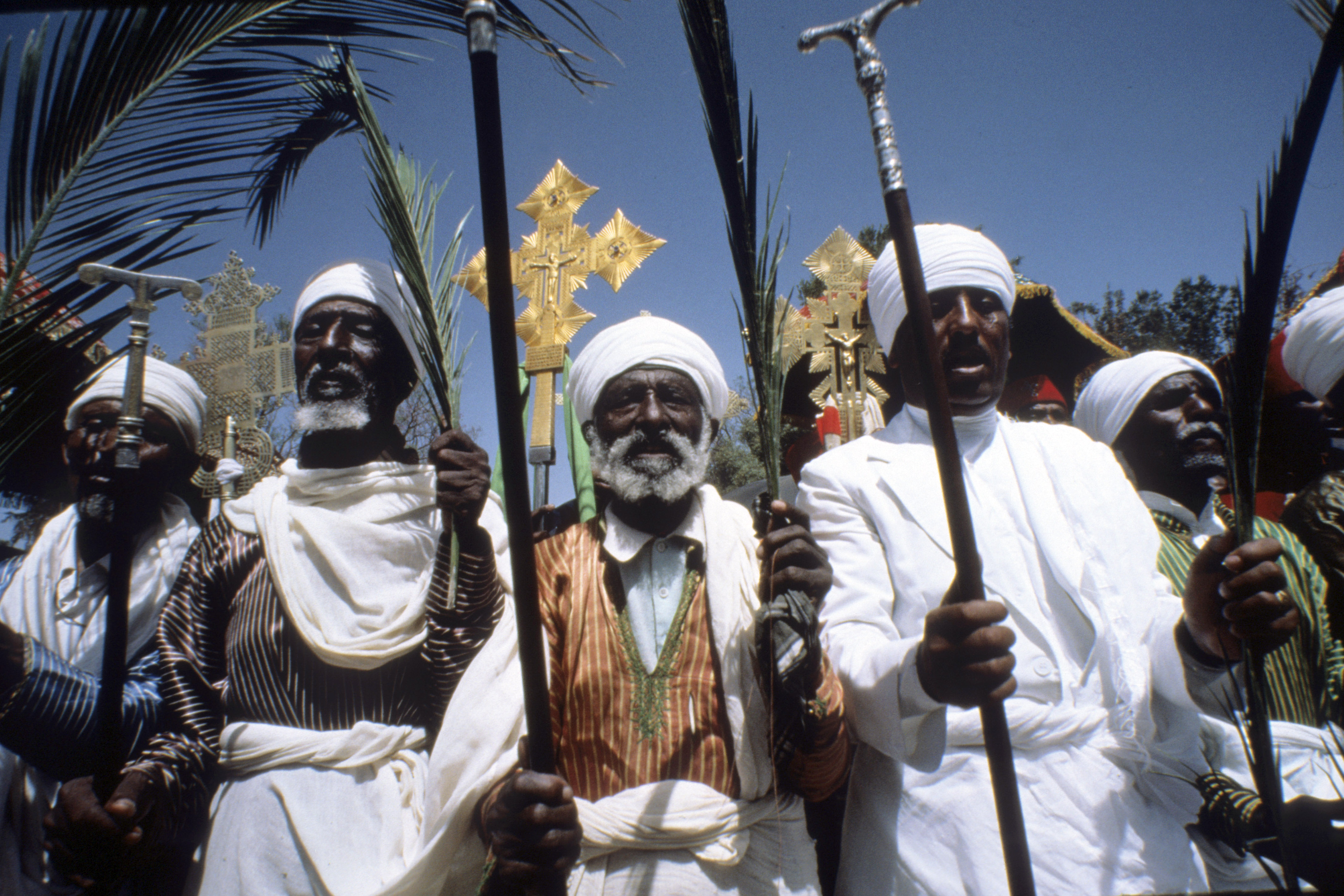Zagwe dynasty
- The Zagwe dynasty was the ruling dynasty of a Medieval kingdom in present-day northern Ethiopia. The kingdom itself was perhaps called Begwena, after the historical name of the Lasta province. Centered at Lalibela, it ruled large parts of the territory from approximately 900 to 1270, when the last Zagwe King Za-Ilmaknun was killed in battle by the forces of the Abyssinian King Yekuno Amlak.
- The name of the dynasty is thought to derive from the ancient Ge'ez phrase Ze-Agaw, meaning "Dynasty of the Agaw" in reference to the Agaw people that constituted its ruling class. Zagwe's best-known King was Gebre Mesqel Lalibela, who is credited with having constructed the rock-hewn monolithic churches of Lalibela.
- Gebre Mesqel Lalibela is said to have seen Jerusalem in a vision and then attempted to build a new Jerusalem as his capital in response to the capture of old Jerusalem by Muslims in 1187. As such, many features of the town of Lalibela have Biblical names including the town's river, known as the River Jordan. The city remained the capital of Ethiopia from the late 12th century and into the 13th century.
- Yemrehana Krestos, King (negus) of Ethiopia and a member of the Zagwe dynasty, is credited with the construction of a stone church built in the Aksumite style, which bears his name. Located 12 miles northeast from Lalibela, the Yemrehana Krestos Church was built in a large northeast-facing cave on the western side of Mount Abuna Yosef.
Gebre Mesqel Lalibela
Lalibela regnal name Gebre Meskel (Ge'ez: ገብረ መስቀል, lit. 'Servant of the Cross'; 1162 – 1221) was Emperor of Ethiopia of the Zagwe dynasty, reigning from 1181 to 1221.
List of Emperors of Ethiopia
This article lists the Emperors of Ethiopia, from the founding of the Zagwe dynasty in the 9th/10th century until 1974, when the last Emperor from the Solomonic dynasty was deposed.
Yemrehana Krestos
Yemrehana Krestos (called "Abraham" by Francisco Álvares) was a King (negus) of Ethiopia, and a member of the Zagwe dynasty.
Lalibela
Lalibela (Amharic: ላሊበላ) is a town in Amhara Region, Ethiopia famous for its rock-cut monolithic churches. The whole of Lalibela is a large antiquity of the medieval and post-medieval civilization of Ethiopia. Lalibela is one of Ethiopia's holiest cities, second only to Axum, and a center of pilgrimage. Unlike Axum, the population of Lalibela is almost completely Ethiopian Orthodox Christian.
Rock-Hewn Churches, Lalibela
The 11 medieval monolithic cave churches of this 13th-century 'New Jerusalem' are situated in a mountainous region in the heart of Ethiopia near a traditional village with circular-shaped dwellings. Lalibela is a high place of Ethiopian Christianity, still today a place of pilmigrage and devotion.
Na'akueto La'ab
Na'akueto La'ab was negus of Ethiopia, and a member of the Zagwe dynasty. Na'akueto La'ab exists, in a manuscript written in the 17th century. According to Huntingford, it documents that Zagwe power had extended into Gojjam, and credits the king with building two churches
Yemrehana Krestos
Yemrehana Krestos (called "Abraham" by Francisco Álvares) was a King (negus) of Ethiopia, and a member of the Zagwe dynasty. Taddesse Tamrat describes him as the king of Ethiopia closest to a priest, noting that he insisted on ruling Ethiopia according to Apostolic canons.
This page uses materials from Wikipedia available in the references. It is released under the Creative Commons Attribution-Share-Alike License 3.0.
References
